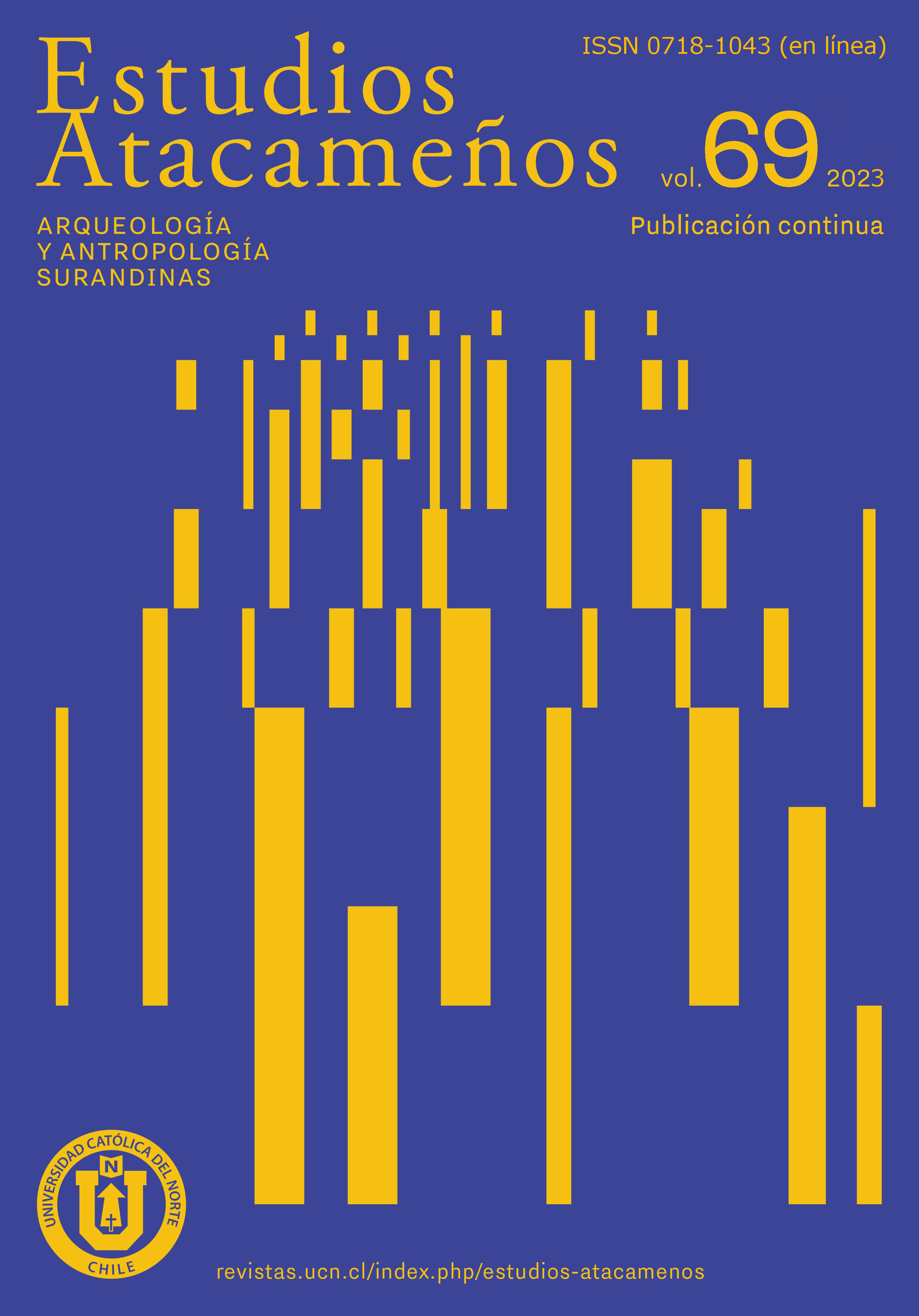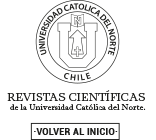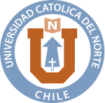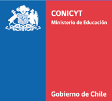Kallawaya, S.A. - la creación de los Kallawaya (1532-2008)
Un acercamiento histórico, relacional y comparativo
DOI:
https://doi.org/10.22199/issn.0718-1043-2023-0005Palabras clave:
naturopatía, memoria cultural, figuras de memoria, etnicizaciónResumen
Los Kallawaya son un grupo étnico que se hizo famoso por su ritualismo y su naturopatía. Este artículo explora el desarrollo de los Kallawaya como una entidad política que, a lo largo del tiempo, se formaba, se modificaba y se adaptaba conforme a sus necesidades políticas y economicas y en la intersección de condiciones locales y de desarrollos globales. El caso de los Kallawaya muestra como los procesos de etnicización se despliegan mediante la interacción de lógicas primordialistas e instrumentalistas. Un importante vehículo para la etnicización es la resiliencia manifestándose en la memoria cultural.
Citas
Adelaar, W. F., & Muysken P. C. (Eds.). (2004). The languages of the Andes. Cambridge University. https://doi.org/10.1017/CBO9780511486852
Aguilo, F. (1991). Diccionario kallawaya. MUSEF.
Albó, X., & Layme F. (Eds.). (1992). Literatura Aymara (Vol. 37, Cuadernos de Investigación). CIPCA.
Alderman, J. (2016). The Path to Ethnogenesis and Autonomy: Kallawaya-consciousness in Plurinational Bolivia [PhD Thesis, University of St. Andrews]. St Andrews Research Repository. https://bit.ly/42xQJTv
Allen, C. J. (2016). Stones Who Love Me. Archives de sciences sociales des religions. 61(174), 327-346. https://doi.org/10.4000/assr.27854
Álvarez Mamani, A. (1986). Primer Encuentro Regional de Medicos Kallawayas. Arinsana, (1), 79-81.
Anagnostou, S. (2011). Missionspharmazie. Franz Steiner.
Anagnostou, S. (2000). Jesuiten in Spanisch-Amerika als Übermittler von heilkundlichem Wissen. Wissenschaftliche Verlagsgesellschaft.
Anderson, B. (2006).Imagined Communities. Verso.
Armentia, N. (1903).Relación histórica de las misiones franciscanas de Apolobamba. Imprenta del Estado.
Armentia, N. (1905). Descripción del territorio de las misiones franciscanas de Apolobamba. Artística.
Arriaga, P. J. (1621). Extirpación de la Idolatria. Lima.
Assmann, J. (2000). Das kulturelle Gedächtnis. Beck.
Assmann, J. (2008). Communicative and Cultural Memory. In A. Erll, & A. Nünning (Eds.), Cultural Memory Studies (pp.109–118). De Gruyter.
Assmann, J. (1988). Kollektives Gedächtnis und kulturelle Identität. In J. Assmann, & T. Hölscher, (Eds.), Kultur und Gedächtnis (pp. 9-19). Suhrkamp.
Avedaño, F. (1648). Sermones de los misterios de nuestra Santa Fe Católica, en lengua castellana, y la general del Inca. Jorge Lopez de Herrera.
Barker, J. (2012). Donkeys and mules in the ‘New World’. [Paper presented]. Donkey Conference@SOAS, University of London. https://bit.ly/3NGFKTE
Barth, F. (1981). Process and form in social life. Routledge.
Barth, F. (2002). An Anthropology of Knowledge. Current Anthropology. 43(1), 1-18. https://doi.org/10.1086/324131
Bastien, J. (1978). Mountain of the Condor. Metaphor and Ritual in an Andean Ayllu. Waveland.
Bastien, J. (1979). Land Litigations in an Andean Ayllu from 1592 until 1972. Ethnohistory. 26(2), 101-131. https://doi.org/10.2307/481087
Bertonio, L. (1984). Vocabulario de la lengua aymara. CERES/IFEA/MUSEF.
Briggs, L. T. (1993). El idioma Aymara. ILCA.
Cárdenas, R. (1979). Provincia Bautista Saavedra. Edición del autor. https://bit.ly/3plvaYc
Cerrón-Palomino, R. (1985). El franciscano Raez y la unificación del quechua. Anthropologica, 3(3), 203-246. https://doi.org/10.18800/anthropologica.198501.009
Cerrón-Palomino, R. (2011). El legado onomástico Puquina: A propósito de “Capac” y Yupanqui”. Estudios Atacameños, (41), 119-130. http://dx.doi.org/10.4067/S0718-10432011000100007
Cerrón-Palomino, R. 2013. El sufijo –illo en la toponimia andina: a propósito del topónimio ‘Carabailloʼ. Lexis, 37(2),383-401. https://doi.org/10.18800/lexis.201302.005
Cipolla, C. (2017). Native American Diaspora and Ethnogenesis. In Oxford Handbooks Editorial Board (Eds.), The Oxford Handbook of Topics in Archaeology. Oxford Academic, https://doi.org/10.1093/oxfordhb/9780199935413.013.69.
Clarence-Smith, W. G. (2020). Jesuits and mules in colonial Latin America: innovators or managers? In L. A. Newson (Ed.), Cultural Worlds of the Jesuits in Colonial Latin America (pp. 209–228). Institute of Latin American Studies.
Cobo, B. (1956). Historia del Nuevo Mundo. Atlas.
Corr, R., & Vieira Powers, K. (2012). Ethnogenesis, Ethnicity, and ‘Cultural Refusal’. The Case of the Salasacas in Highland Ecuador, Latin American Research Review, 47(S1), 5-30. https://doi.org/10.1353/lar.2012.0058
Cruz, P., & Téreygeol, F. (2014). Yanaconas del rayo. Reflexiones en torno a la producción de metales en el espacio surandino (Bolivia, siglos xv-xvi). Estudios Atacameños, (49), 19-44. http://dx.doi.org/10.4067/S0718-10432014000300003
Dedenbach Salazar-Saénz, S. (2003). Die Stimmen von Huarochirí : Indianische Quechua-Überlieferungen aus der Kolonialzeit zwischen Mündlichkeit und Schriftlichkeit [Habilitationsschrift, Universität Bonn]. bonndoc - The Repository of the University of Bonn. https://bit.ly/3M6DZ0M
De la Calancha, A. (1638). Coronica moralizada del Orden de san Augustin en el Peru. Pedro Lacavalleria.
Donati, P. (2018). An Original Relational Sociology Grounded in Critical Realism. In F. Dépelteau (Ed.), The Palgrave Handbook of Relational Sociology (pp. 431-456). Palgrave Macmillan.
Durán, L. (2007, March 7). Medicina tradicional andina, una alternativa para las comunidades en Bolivia. Alianza para un mundo responsable, plural y solidario. https://bit.ly/3MeAvcx
Duviols, P. (1967). Un inédit de Cristobal de Albornoz: La instrucción para descubrir todas las guacas del Pirú y sus camayos y haziendas. Journal de la Société des Américanistes, 56(1), 7-39. https://doi.org/10.3406/jsa.1967.2269
Edwards, D. (2020). Ethnogenesis, Ethnicization and Ethnopolitics (Working Paper, Special Edition N° 2). The University of the West Indies. https://bit.ly/3nO7yuB
Estado Plurinacional de Bolivia. (2009). Nueva Constitución Política del Estado. Sigla.
Esteyneffer, J. (1712). Florilegio Medicinal de Todas las Enfermedades. Herederos de Joseph Guillena Carrascoso.
Evans, B. M. (1985). The Structure and Distribution of the Indian Population of Alto Peru in the Late Seventeenth Century. Yearbook (Conference of Latin Americanist Geographers, 11, 31-37. https://bit.ly/3HO00ic
Fabian, J. (2007). Memory Against Culture. Duke University.
Faguet, J.-P. (2003). Decentralization and Local Government in Bolivia. An overview from the bottom up (Working Paper N°29). Crisis States Programme, Development Research Centre. https://bit.ly/3NPJbax
Falkinger, S. (2018). Maquimanaucotos - Medicine for the body - medicine for the soul. In F. Obermeier (Ed.), Jesuit colonial medicine in South America (pp. 103-137). Germany.
Fischer, E, (2008). Urdiendo el tejido social. LIT.
Flick, U. (2006). Triangulation. In V. Jupp (Ed.). The SAGE Dictionary of Social Research Methods (pp. 305-306). SAGE.
Foster, G. M. (1987). On the Origin of Humoral Medicine in Latin America. Medical Anthropology Quarterly, 1(4),355-393. https://doi.org/10.1525/maq.1987.1.4.02a00020
Gade, D. W. (1983). Lightning in the Folklife and Religion of the Central Andes. Anthropos, 78(5/6), 770–788. https://bit.ly/3nGmR8J
Gallardo, F. (2013). Sobre el comercio y mercado tradicional entre los Lupaca del siglo XVI: un enfoque económico sustantivo. Chungará (Arica), 45(4), 599-612. https://doi.org/j85w
Girault, L. (1969). Textiles boliviens. Musée de l’Homme.
Girault, L. (1987). Kallawaya. Curanderos Itinerantes de los Andes. Quipus.
Girault, L. (1989). Kallawaya. El idioma secreto de los Incas. Mundy Color.
Guaman Poma de Ayala, F. (1980). El primer nueva corónica y buen gobierno (J. L. Urioste, Trans.). Siglo Veintiuno.
Guzmán, G., & Ranaboldo. C. (1986). Informe: Primer encuentro regional de médicos Kallawayas. Arinsana, (1), 81-83.
Guzmán, G., & Rodríguez-López, F. (2018). Voto étnico en Bolivia: cohesión, disgregación y clivajes étnicos. Política y gobierno, 25(1), 65-100. https://bit.ly/3pjamAz
Hardman, M. J., Vásquez, J., & Yapita, J. D. (1988). Aymara, compendio de estructura fonológica y gramatical. Aymara Foundation.
Haenke, T. (1900). Introducción a la Historia Natural de la Provincia de Cochabamba. Tipografía Comercial. https://bit.ly/3B3X5hV
Hannß, K. (2017). The Etymology of Kallawaya. Journal of Language Contact, 10(2), 219-263. https://doi.org/10.1163/19552629-01002002
Hannß, K. (2015). Etymological Dictionary of Kallawaya. LAC. https://bit.ly/42jxJbQ
Hill, J. D. (1996). History, Power, and Identity: Ethnogenesis in the Americas, 1492-1992. University of Iowa.
Humboldt, A. von. (1821). Account of the Cinchona forests of South America. In A. Bourke Lambert, (Ed.), An Illustration of the genus Cinchona. (pp. 19-59). John Searle.
Heaton, J. (2008). Secondary analysis of qualitative data: an overview. Historical Social Research 33(3), 33-45. http://dx.doi.org/10.12759/hsr.33.2008.3.33-45
Huayhua, M., & Bendezú, R. (2009). Algunos problemas en la traducción del quechua. Crónicas Urbanas, 13(14), 41-52.
Itier, C. (2002). Quechua, Aymara and Other Andean Languages: Historical, Linguistic and Socio-linguistic Aspects [Lecture], Maison de l'Amérique Latine, Paris. https://bit.ly/42dJDnr
Janni, K., & Bastien, J. (2004). Exotic Botanicals in the Kallawaya Pharmacopoeia. Economic Botany, 58(Supp. 1), 274-279. https://doi.org/bnz4vz
Jenkins, R. (2008). Rethinking Ethnicity. SAGE.
Kallawaya sin fronteras (s.f.). ¿Quiénes somos?. http://www.kallawayas.org/Quienes.htm
Lara, J. (1978). Diccionario qhëswa-castellano, castellano-qhëswa. Los Amigos del Libro.
Ledger, C. (1881). The story of Cinchona Ledgeriana. American Journal of Pharmacy, 53(3). https://bit.ly/3VSRxjM
Llanos, D. (2003). Elites locales y estructuras señoriales. Temas Sociales, (24), 231-249. https://bit.ly/3pwjZM1
Loza, C. B. (2004). Kallawaya : reconocimiento mundial a una ciencia de Los Andes. Fundación Cultural del Banco Central de Bolivia.
Loza, C. B. (2014). Medicinas tradicionales andinas y su despenalización: entrevista con Walter Álvarez Quispe. História, Ciências, Saúde – Manguinhos, 21(4), 1475-1486. https://doi.org/10.1590/S0104-59702014000400012
Mannheim, B., & Huayhua, M. (2021). El quechua es un idioma multi-registral. In Centro de Estudios Regionales Andinos Bartolomé de Las Casas (Eds.), Foro Dilemas de gobernabilidad en el Sur Andino al 2021 (pp. 152–157). CBC. https://bit.ly/3Mfuk8j
Markham, C. R. (1880). Peruvan bark. A popular account of the Introduction of Cinchona cultivation into British India. John Murray. https://bit.ly/3Bal0w9
Miller, J. (1829). Memoirs of General Miller, in the Service of the Republic of Peru (Vol. 1). Longman. https://bit.ly/3pwomqp
Millones Figueroa, L. (2014). The Bezoar Stone: A Natural Wonder in the New world. Hispanófila (171), 139-156. https://doi.org/10.1353/hsf.2014.0028
Molina, C. (2010). Relación de las fábulas y ritos de los incas. Vervuert Iberoamericana.
Monardes, N. (1580). Primera y segunda y tercera partes de la historia medicinal de las cosas que se traen de nuestras Indias Occidentales que sirven en Medicina. Casa de Fernando Díaz. https://bit.ly/44FMabA
Muysken, P. (2012). Root/Affix asymmetries in contact and transfer: Case studies from the Andes. International Journal of Bilingualis, 16(1), 22-36. https://doi.org/bfj2fg
Murúa, M. (1962). Historia General del Perú, origen y descendencia de los Incas. Góngora.
Instituto Nacional de Estadística. (2013). Censo Nacional de Población y Vivienda 2012. INE.
Oblitas, E. (1969). Plantas Medicinales en Bolivia. Los amigos del libro.
Oblitas, E. (1978). Cultura Callawaya. Camarlinghi.
O’Phelan, S. (1995). La gran rebelión en los Andes. Centro de Estudios Regionales Andinos Bartolomé de Las Casas.
Oré, L. (1607). Rituale seu Manuale Peruanum. Apud Io. Iacobum Carlinum, & Costantinum Vitalem. https://bit.ly/3VT4U3s
Otero, G. A. (1951). La Piedra Mágica. Gráfica Panamericana.
Paredes, R. M. (1920). Mitos, Supersticiones y Supervivencias Populares de Bolivia. ARNO Hermanos.
Paz, C. D. (2018). Con los nombres de los caciques forjaron diversas naciones. In J. C. Troisi Melean, & M. Amantino (Eds.), Jesuitas en las Américas (pp. 381-414). Teseopress.
Ponce, C. (1957). Arqueología Boliviana. Biblioteca Pazeña.
Quispe, F. (2008). La quena Mollo: supervivencia y persistencia de música y danza tradicional andina. Plural.
Ranaboldo, C. (1992). El camino perdido. SEMTA.
Rao, U. (2002). Ina Rösing: Religion, Ritual und Alltag in den Anden. Die zehn Geschlechter von Amarete [Review of the book]. Kölner Zeitschrift für Soziologie und Sozialpsychologie 54(2), 390-392. https://doi.org/10.1007/s11577-002-0055-4
Renard, F. -M., Saignes, T. and Taylor, A. C. (1988). Al este de los Andes. Relaciones entre las sociedades amazónicas y andinas entre los siglos XV y XVII (Vol. 1), IFEA.
Rivera, S. (1997). Secuencias iconográficas en Melchor María Mercado (1841-1869). In R. Barragán, & S. Qayum (Eds.), El siglo XIX: Bolivia y América Latina (pp. 147-168). Muela del Diablo.
Rösing, I. (2001). Die zehn Geschlechter von Amarete. Reimer.
Rösing, I. (2009). Sie blicken dich an, sie schauen weg. Weishaupt.
Saignes, T. (1985a). Caciques, Tribute and Migration in the Southern Andes. (Vol. 15, University of London, Institute of Latin American Studies occasional papers). University of London. https://bit.ly/3nH5l4p
Saignes, T. (1985b). Los Andes Orientales: Historia de un Olvido. CERES.
Saignes, T. (1986). En busca del Poblamiento Étnico de los Andes Bolivianos (Siglo XV y XVI). (Vol. 3, Avances de Investigación). MUSEF.
SmithsonianNMAI. (2017, June 11). Suma Qamaña 2014 Bolivian Festival 23: Kallawaya [Video file]. Youtube. https://youtu.be/p3CpPtztWU0
Soux, M. L. (1991). Caupolicán en el Siglo XIX: Estructura Agraria de la Provincia. In M. L. Soux, M. Quiroga Gismondi, R. Jiménez, L. de los A. Cárdenas, & R. Hilari (Eds.), Apolobamba, Caupolicán, Franz Tamayo: Historia de Una Región Paceña (pp. 83–129). Prefectura del Departamento de La Paz, UMSA.
Stephenson, M. C. (2010). From marvelous antidote to the poison of idolatry: The transatlantic role of Andean bezoar stones during the late sixteenth and early seventeenth centuries. Hispanic American Historical Review, 90(1), 3–39. https://doi.org/c9jcd9
Taylor, G. (1987). Ritos y tradiciones de Huarochiri. IEP.
Tedlock, D., & Mannheim, B. (Eds.). (1995). The Dialogic Emergence of Culture. University of Illinois.
Valdizán, H., & Maldonado, A. (1922). La Medicina Popular Peruana. Torres Aguirre.
van de Graaf, M. (1984). Traditionelle Medizin in Bolivien und Integrationsbemühungen in die nationale Gesundheitsversorgung [PhD. dissertation, University of Berlin]. Bibioteca digital Pueblos Originarios de Bolivia. https://bit.ly/3prHnKX
Vokral, E. V. (1989). Küchenorganisation und Agrarzyklus auf dem Altiplano. Nahrungsgewinnung, Zubereitung und Konsum in der ländlichen Gesellschaft bei Juliaca (Südperu). Holos.
Vokral, E. V. (1985). Informe sobre el Primer Encuentro Regional de Médicos Kallawayas. Arinsana, (0), 44-45.
Wassén, H. (1972). A Medicine-man’s Implements and Plants in a Tiahuanacoid Tomb in Highland Bolivia. Elanders Boktryckeri Aktiebolag.
Weddell, H. A. (1853). Voyage dans le Nord de la Bolivie et dans les parties voisines du Pérou. Bertrand.
Weddell, H. A. (1848). Histoire naturelle des Quinquinas. Victor Masson.
Wrigley, G. M. (1917). The travelling doctors of the Andes: The Callahuayas of Bolivia. Geographical Review, 4(3), 183-196. https://doi.org/10.2307/207412
Wrigley, G. M. (1916). Salta, An Early Commercial Center of Argentina. Geographical Review, 2(2), 116-133. https://doi.org/10.2307/207387
Wilkin, P. J. (2014). Transmission and Commoditisation of Medicinal Plant Knowledge in the Marketplaces of Oruro, Bolivia. [PhD dissertation, University of Kent]. Kent Academy Repository. https://bit.ly/41rkEfl
Zuidema, T. R. (1967). El juego de los ayllus y el amaru. Journal de la Société des Américanistes, 56(1), 41-51. https://doi.org/10.3406/jsa.1967.2270
Publicado
Cómo citar
Número
Sección
Derechos de autor 2023 Eva Fischer

Esta obra está bajo una licencia internacional Creative Commons Atribución 4.0.

Todos los trabajos publicados en Revista Estudios Atacameños (eISSN:0718-1043) están sujetos a una licencia Creative Commons Reconocimiento 4.0 Internacional
Los autores continúan como propietarios de sus trabajos, y pueden volver a publicar sus artículos en otro medio sin tener que solicitar autorización, siempre y cuando indiquen que el trabajo fue publicado originariamente en Revista Estudios Atacameños (eISSN:0718-1043).

















